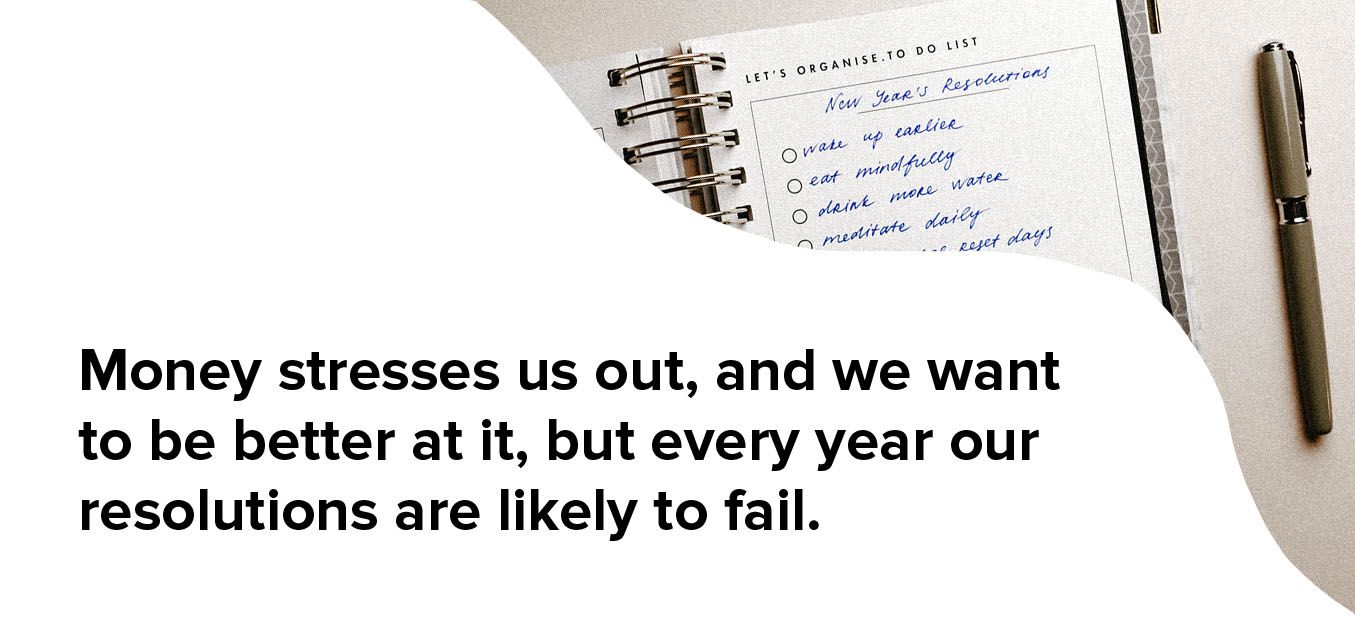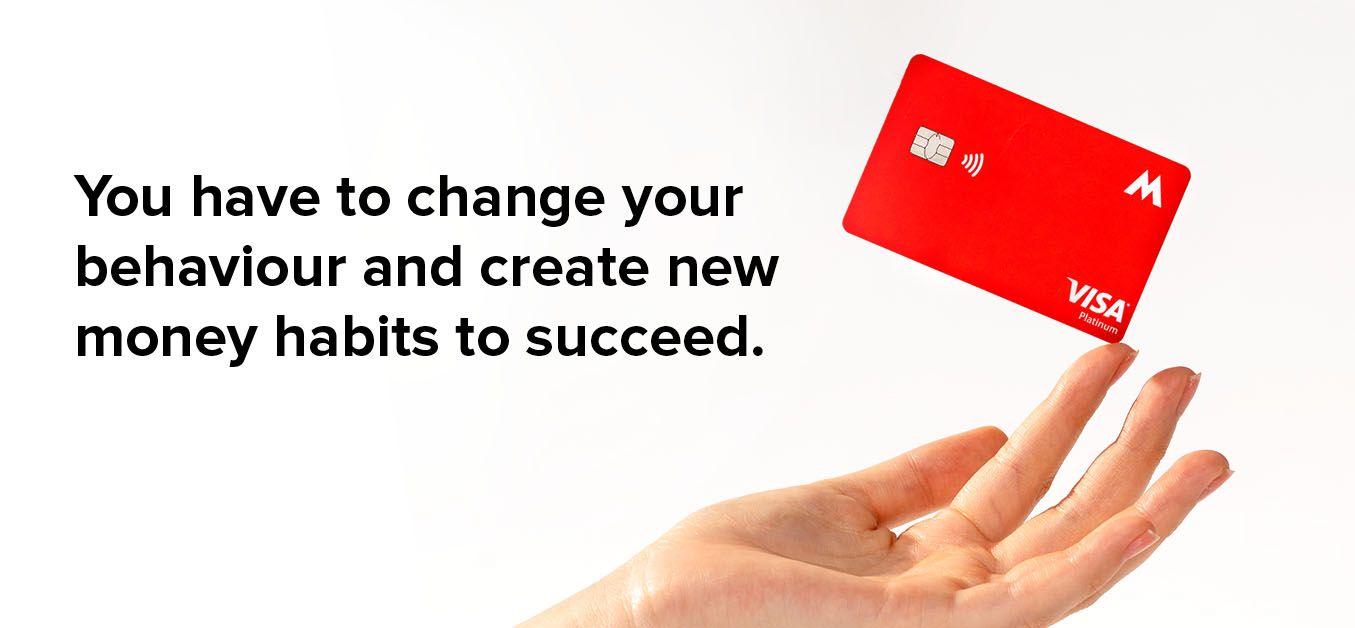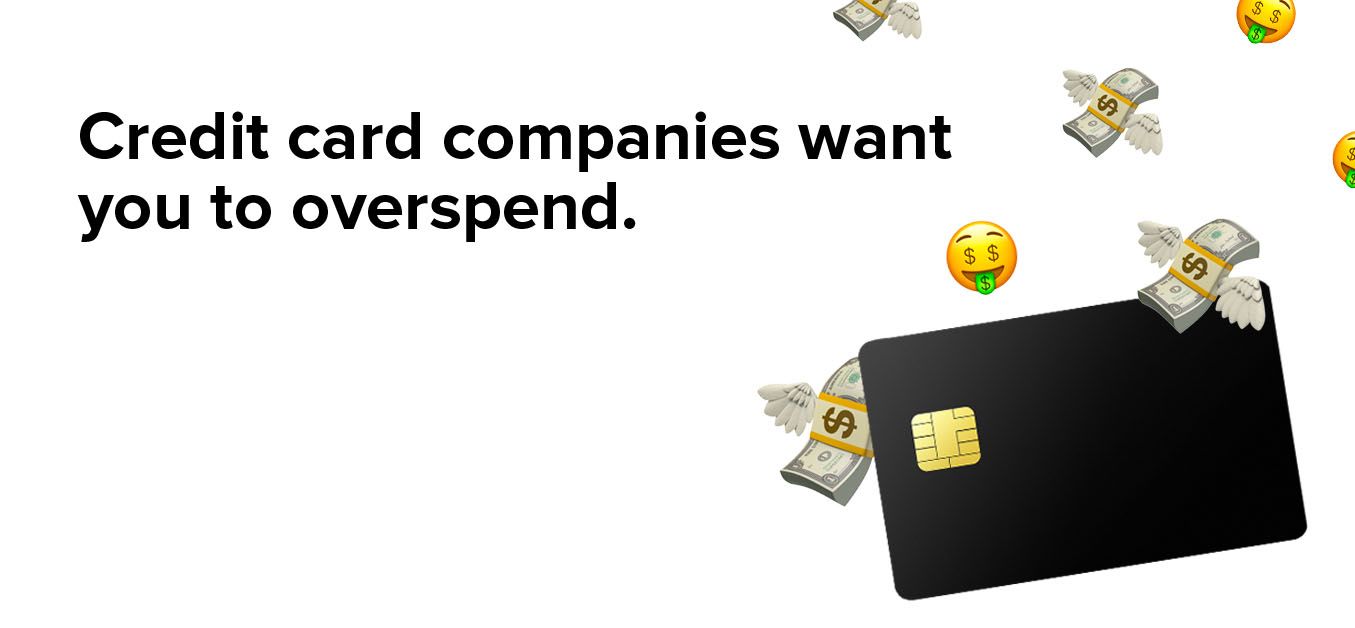You Should Break Up With Your Credit Card
Your credit card is not your friend.
Happy New Year! Let’s get into it.
Fact the second: according to a survey by YPulse, Gen Z ranked ‘better money management’ at #5 on their list of 2022 resolutions, and Millennials rated the same topic as their #1 priority for this year.
Fact the third: according to an Ipsos survey, 78% of Canadians are likely to abandon their New Year’s resolutions; according to a research report from Strava Labs, most people will give up on their New Year’s Resolutions by January 19.

Badabing, badaboom—money stresses us out, and we want to be better at it, but every year our resolutions may be likely to fail.

Why? Because simply wanting to master money management isn’t enough to get you on the path to financial freedom. You have to change your behaviour and create new money habits to succeed.
| SIGN UP |
Why Credit Cards Suck
Many Canadians get their first credit card in their late teens or early twenties and will continue to use a credit card for the rest of their lives. In Canada, after all, you need a credit card to help you establish your credit score, which can be critical when trying to rent or buy property.
But credit cards can be like little traps. They can be expensive, can breed bad money habits, and can add significant stress to your life. They’re so last year. Here’s why.
Credit Cards Make It Hard to Budget
Using your credit card for daily expenses might seem like an effortless way to manage your money. But always withdrawing funds from one pot of money (which isn’t even yours, lest we forget) can make it easy to lose track of what you’re spending.
This is one reason that people can frequently overspend on their credit card and wind up carrying extra debt for years.
Using Credit Costs Money
Generally credit card companies in Canada charge an average of 19% and up to 29.99% in interest. If you don’t pay your balance in full within the period specified in the specific credit card’s terms and conditions, then you’ll typically be charged a similar interest rate. Interest accumulates on your principal balance as well as previously assessed interest.
Let’s see how that stacks up.
Your (hypothetical) balance: $1,000 CAD
Your interest rate: 19.99%
Your minimum monthly payment: $30.00
So on that principal $1,000 debt, you’ll pay almost half again just in interest fees if you’re only making your minimum payment.
See? Bad news bears.
Credit Cards Are Designed to Make You Overspend

Make no mistake: that interest expense is intentional. That’s how credit card companies make money.
In order to turn a profit, credit card companies have to make it easy and fun for you to use your credit card, to spend money, and to pay them interest. They want you to overspend.
This is a measurable phenomenon: an MIT study by Prelec and Simester (2001) found people are more likely to spend 100% more when using a credit card. 100% more!!“But I always pay off my balance in full before interest is assessed!” Using your credit card at all involves spending money that isn’t yours which is, by definition, overspending. Buying stuff we can’t afford makes it more difficult for us to save.
And that’s to say nothing of the negative financial and environmental impacts of overconsumption.
If possible, credit cards are not something you want to be using regularly. Instead, create great financial habits, spend way smarter, and shape up your financial future with the MogoCard.
The MogoCard Can Help You Spend Smart
Remember that issue of the abandoned New Year’s Resolution? Jeff Haden muses for Inc. that the reason so many of us fail at our resolutions is we approach them in the wrong way.
Read: smart money management isn’t a switch that can just be flipped on—especially if you’re currently divorcing your credit card. It takes time, habits, and intentionality to make smart spending and better financial management the easiest, most satisfying option.
That’s where we come in.
| GET MY FREE MOGOCARD |
Make Budgeting Habitual
Your MogoCard is prepaid. This means that you can only spend what you load onto it.
Ugh, annoying! I have to load the card every time I get paid?
… Yes. That’s the point!
This little moment of friction does two things: it forces you to revisit your monthly budget. Are you on target? Are you overspending? Are you underspending?
It also separates your discretionary income from your fixed expenses such as your rent, mortgage, or utility bills. No more accidentally overspending and coming up short for rent.
You cannot spend more than you have while using only your MogoCard. The ritual of moving your discretionary spending money over can help encourage you to keep a stronger grasp on your budget, and spend more mindfully.
Balance Alerts For Every Transaction
Whenever you tap your MogoCard and make a purchase, you’ll receive an instant notification reminding you of your remaining balance.
Like this:
You: *tap* Yessss I love my new sneakers!
Mogo: You just spent $150 at Nike. Your remaining balance is $42.69.
You: Well, well, well, if it isn’t the consequences of my own actions….
With these balance alerts, you’ll always know how much $$$ you’ve got left to spend, so you can spend more carefully and make your money go further.
MogoCard Could Help You Save
In a survey we carried out last year, some active MogoCard users reported that they saved an average of $201 every month just by moving their daily spending onto the MogoCard.1
Balance alerts, more opportunities to budget, and removing the possibility of overspending literally saved some people over $200 a month.
If you’re in debt, you know what an extra $200 every month can do. If you’re not in debt, investing that extra $201 every month could make you a lot of money over time.
Every dollar you don’t spend is literally another dollar in the bank, for your future.
Your New Money Management Habit
So here’s the deal.
Instead of forming brand new money habits from top to bottom immediately, just make this one good money management decision today.
Swap your credit card for your MogoCard.
The sooner you can stop your debt cycle and start spending smarter, the better off your finances could be.
The MogoCard is totally free to use, and every time you tap, we plant a tree on your behalf. The MogoCard can help you grow your wealth, save money, and save the planet. That’s a pretty solid impact for simply swapping one card for another in your wallet.
| GET MY FREE MOGOCARD |
There’s truly no time like the present.
Remember the formula:
- Spend smart with your MogoCard (and plant trees while you’re at it!).
- Invest early and consistently.
Happy New Year, everybody! 2022 will be the best yet.
This blog is provided for informational purposes only.
*Trademark of Visa International Service Association and used under licence by Peoples Trust Company. Mogo Visa Platinum Prepaid Card is issued by Peoples Trust Company pursuant to licence by Visa Int. and is subject to Terms and Conditions, visit mogo.ca for full details. Your MogoCard balance is not insured by the Canada Deposit Insurance Corporation (CDIC). MogoCard means the Mogo Visa Platinum Prepaid Card.
1-Based on an online survey of active MogoCard users by Mogo Inc. conducted between July 13, 2021 and July 16, 2021, with 1,446 respondents to a combination of multiple choice and fillable text box questions. 91% of respondents agreed that the MogoCard can help them better control their spending. 66.5% of respondents reported that they were spending less on discretionary spending now that they were using the MogoCard, with respondents reporting that they believed to have an average savings of $201 per month (based on 902 respondents who specified an amount and excluding 60 respondents who did not specify any amount).
2-A $201 monthly contribution into an investment with an annual rate of return of 10%, compounded monthly, will result in an investment with a total value of $3,482,202.55 over 50 years. This representative example is provided for informational purposes only and should not be relied upon as investment advice. There’s no guarantee that you will earn a 10% annual return if you invest in the stock market and each individual’s financial situation is unique, so you should always do your own research and/or seek independent financial advice before making any investment. This calculation was determined according to the Ontario Securities Commission Compound Interest Calculator, found here:https://www.getsmarteraboutmoney.ca/calculators/compound-interest-calculator/. Past performance is not indicative of future results. For more information on historic average annual returns for the S&P 500, see: https://www.investopedia.com/ask/answers/042415/what-average-annual-return-sp-500.asp.